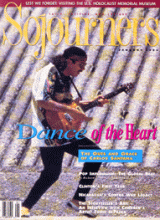"Globalization" is the most fashionable word of the 1990s, so portentous and wonderfully patient as to puzzle Alice in Wonderland and thrill the Red Queen because it means precisely what the user says it means. Just as poets and songwriters celebrated the rise of modern nationalism, so in our day corporate managers, rock stars, and writers of advertising copy offer themselves as poet laureates of the Global Village.
In the age of globalization, the chase of the global customer is speeding up. Corporate executives dream of a global market made up of people with homogenized tastes and needs who no longer demand that marketers and advertisers be so "respectful" of local tastes and cultural quirks. (Moslems and Hindus both need to brush their teeth. As one advertising specialist puts it, "A headache is a headache.")
The idea that a company can sell its products in exactly the same way and with essentially the same words and pictures in Katmandu as in Peoria is immensely appealing to global corporations and the advertisers and marketing specialists who serve them. Robert C. Goizueta, chair of the Coca-Cola Company, notes that "people around the world are today connected by brand name consumer products as much as by anything else." Logos on bottles, boxes, and labels are global banners, instantly recognizable by millions who could not tell you the color of the U.N. flag.
The aura surrounding global products and their immense reach means that masses of people separated by great distance now want the same things to eat, drink, play with, and wear. The penetration of commercial culture even into remote villages across the world is spreading global dreams of the good life based on spending and consuming, a window but not a door for the vast majority of people who lack money or credit to buy much of anything. The global shopping mall is in business to serve about 1.7 billion of
Read the Full Article

